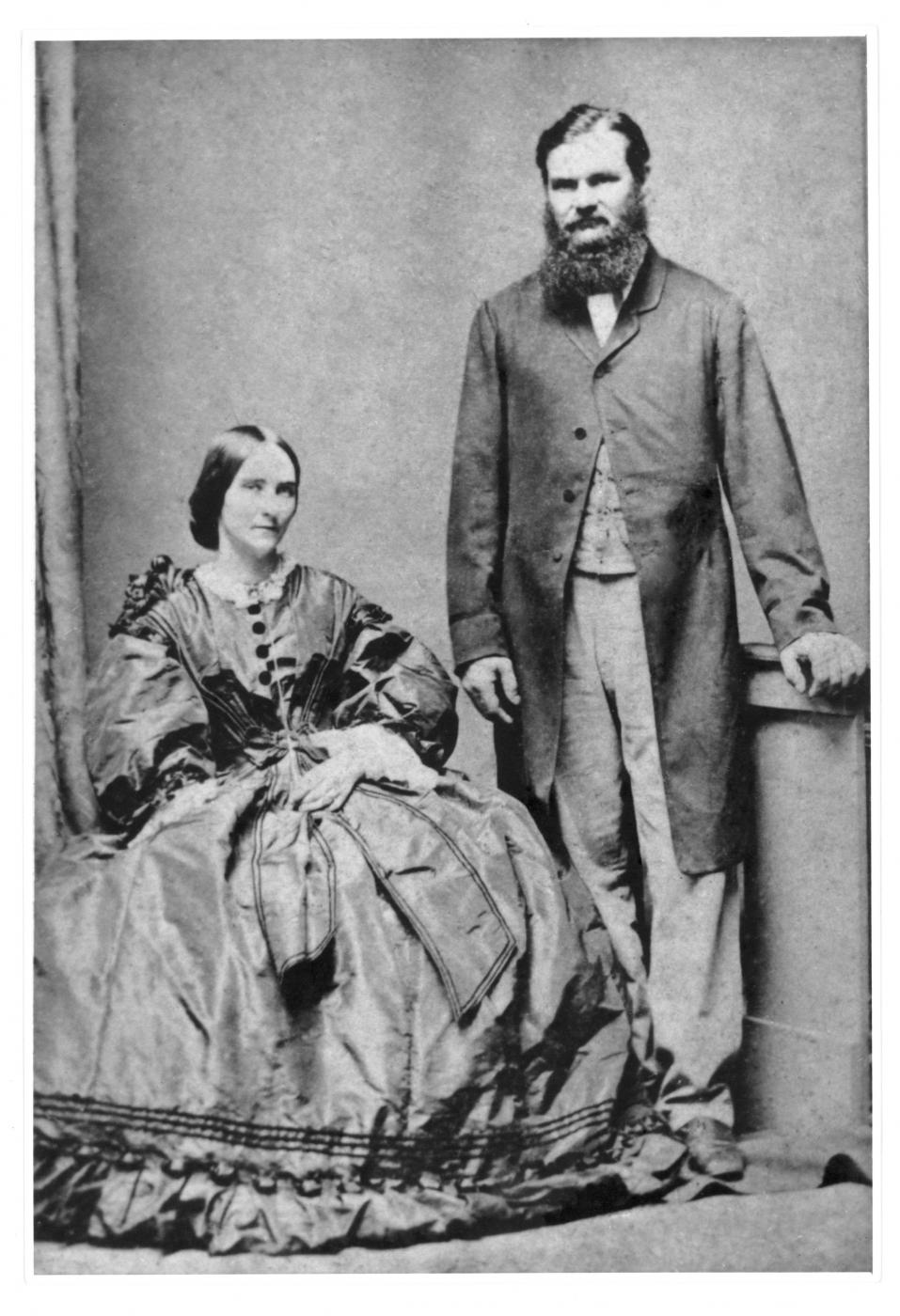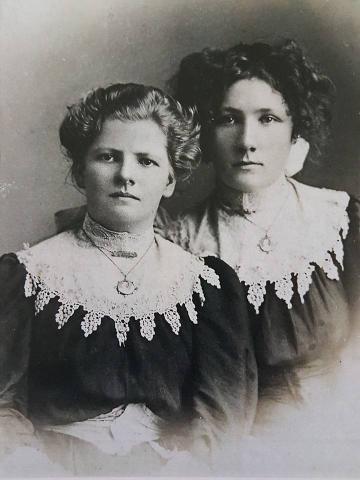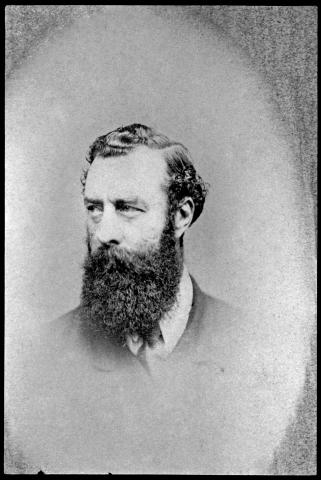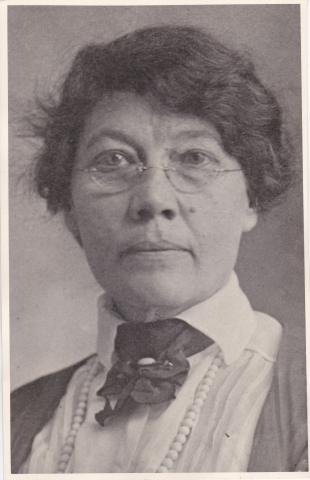
- News of the Day
-
Extract from:
Maryborough Chronicle, Wide Bay and Burnett Advertiser, Wednesday 8 August 1945 page 5
A LINK WITH THE PAST
LANDSBOROUGH’S EXPLORATION RECALLED
Eldest Daughter Lives at MackayFamily Fame.
Of Dr. Landsborough's family of four sons and three daughters, says the 'Kilmarnock Standard', “one, William, attained fame as an Australian explorer. His mother died when he was a child, and this may have had something to do with the hardy training he received; but he was come of the real stock of the Scottish land, and he took naturally in consequence to Nature and to the hardships that, in his lot in the life of Australia, were the almost inevitable concomitant of his adventurous spirit. As a boy, during his years of education at Irvine Academy, he had to be at school at 8 o'clock in the morning in winter, as well as in summer. He had thus many a rigorous morning to face when the winds blew stormy from the Firth, and when the winter snows made chill the long Scotch miles that separated the Manse of Stevenston from the famous old school in Irvine. He was no great scholar, though he had a special aptitude for ornamental writing and drawing, but he could run, wrestle, and leap, and he could swim a river carrying his clothes above his head.
In 1841 he emigrated to Australia to join his two brothers who had preceded him there, and who were already settled as squatters in N.S. Wales. Their commercial enterprise not proving very successful they removed to Queensland which was then being opened up to agricultural and pastoral development and resumed their work as sheep-farmers. The new country, unexplored of the white man, appealed to William Landsborough. In its vast stretches, in Its endless solitudes, there were secrets waiting to be revealed; an unknown land that was reputed desert, waterless, and barren, but that was only lying silent and secret, as it had long done in waiting for the day when it should be opened up to contribute its share to the development and prosperity of the great island continent of the southern seas.
Landsborough resolved to pierce the unknown. He went into the wild and found it was no wild. He found Mt. Nebo and Mt. Cooper, he explored the Peak Downs and Nagra in 1859; he traced the Thomson River to its source in 1860, and the Gregory and Herbert Rivers to their heads in 1861, and became recognised as a bushman worthy to be entrusted with responsibility. So when Robert O'Hara Burke, a police inspector in Victoria, and his companion Wills, had undertaken to conduct an expedition for crossing the Australian continent, and the months passed by without their being heard of, Landsborough was employed by the Royal Society of Victoria to go in search of them. Though the main object of the expedition was predestined to failure, the son of the Stevenston manse did a great work. He traversed the Australian continent from North to south, and this is the enterprise to which he mainly owes his fame.”
Work Continued.
Continuing its narrative, the 'Standard' says: "Later he continued his work of exploration, both in the interior and on the coast, and he and Mr. George Phillips were the first to navigate a boat to the present site of Normanton, on the shores of the Gulf of Carpentaria. Sydney did equal honor with Melbourne to the transcontinental explorer. Queensland raised him to the Upper House with the title of Honorable and voted him £2000 for his “successful and brilliant expedition,” the Royal Geographical Society of Great Britain presented him with a gold watch, and many minor honors were showered upon him. His name is ensured in permanence in Australia. There is' a “Landsborough Farthest” halfway from the Gulf to Mt. Stuart, a Landsborough route across the continent, a Landsborough country in N.S. Wales, a Landsborough town in Queensland and another in Victoria, a Landsborough Creek in Queensland, and a Landsborough Hill in Victoria, as well as a Landsborough River in New Zealand. After his wife Theresa Creek in Queensland is called; Stark Creek in Queensland is called after his sister Margaret; Georgina River in the same State is named after Mrs. James Landsborough; and Isabella Creek after a sister. Mt. Elliot owes its name to an old sweetheart. There is a Landsborough grass as well, and finally a New Zealand alga that is called after the explorer's father;
“Of what stuff William Landsborough was made there is no need to tell, but here is a tribute to his character in one aspect of it, that will be appreciated. There was a man called Murray who had acquired a great reputation as a wrestler. Landsborough went 70 miles to meet him. ‘Is your name Murray?’ ‘Yes.’ ‘My name is Dan Arbuckle. I have come a distance to have a fall with you.’ ‘Very happy,’ said' Murray, ‘but let us first go in and have a glass of wine.’ ‘No, let us have the fall first and wine afterwards.’ They set to. Murray threw his man in the opening round, but in the second ‘Dan Arbuckle’ gave him such a fall that he was ill for a fortnight afterwards. On another occasion Landsborough rode a long way to ride a horse that nobody could mount. Such he was, ready, bold, and resolute, patients also and ripe in perseverance; a man for emergencies and- for the exigencies of the new country; the type of man in which the men are moulded who make the Empire beyond seas great to-day and destined to be greater to-morrow.
Married in Sydney.
Shortly after the completion of his cross-continent journey Mr. Landsborough was married in St. Marks Church, Darling Point, Sydney, to Miss Caroline Hollingsworth Raine, daughter of Captain Raine, on December 30, 1862, and the couple left almost immediately for England, where Mr. Landsborough was honored with presentation to the Queen. At Edinburgh on November 17, 1863, their first child, now Mrs. F. J. North, of Milton-street, Mackay, was born. On their return from the Old Country, two more daughters were born, Janet, later Mrs. Parkinson, in Sydney, while Sweersena, now Mrs. Perrott, of Armidale, was the first white child born on Sweer's Island, to which Mr. Landsborough had been sent as Administrator of the Gulf country on his return from England. When Mrs. North was about six years of age her mother died and, after a number of years, Mr. Landsborough married the widow of Mr. F. W. Carr, who for many years was Inspector of police In North Queensland. There were three sons. The eldest, Sydney L. Landsborough, who was suryeying with Mrs. North's husband for many years, died of enteric fever in the Boer War. The second son, Leslie M. Landsborough, lives in Sydney, and the third, Lionel Boyd Landsborough, is believed to have been killed in the Great War. Sydney was almost as noted as a swimmer as his father was famous in Australian exploration. He was at one time champion swimmer of Queensland, Victoria, and Sydney, while at Redcliffe (Brisbane), then known as Humpybong station, on one occasion he swam two miles in an endeavor to save a child. The child was brought back to shore but was too exhausted to respond to the then incomplete resuscitation methods applied. - Biography of William Landsborough
-
William Landsborough (1825-1886), explorer, was born on 21 February 1825 at Stevenston, near Saltcoats, Ayrshire, Scotland, son of Dr David Landsborough, clergyman, entomologist and artist, and his wife Margaret, née McLeish. Educated in Irvine, he migrated in 1841 to New South Wales where his elder brothers held two stations in New England. By 1850 an expert bushman he leased a near-by run and next year joined the gold rush to Bathurst with some success. In 1854 he followed his brothers north to Monduran, their station on the Kolan River, and with various partners applied for leases. He explored and named Mount Nebo in 1856 and later leased blocks in the area. He explored around Broad Sound in 1857, the Comet and Nogoa Rivers in 1858 and with Stewart examined the Bonar (Bowen) River in 1859. They reached Torrens Creek and looked carefully for traces of Ludwig Leichhardt. From Rockhampton he then went with Nat Buchanan in search of new pastures, and traced Aramac Creek and the Thomson River. Their food ran out but they found good country. In 1861 Landsborough applied for 15 runs of 100 sq. miles (259 km²) each and with Buchanan and Edward Cornish formed the Landsborough River Co. to stock the new 'Plains of Promise', which he named Bowen Downs. To raise capital he sold all his stations except Glenprairie near Broad Sound. He also mortgaged Bowen Downs to the Scottish Australian Co. through its agents, Robert Morehead and Matthew Young, thereby forfeiting his place in management of the stations, although he held a quarter of the shares until 1869.
In 1861 Landsborough was chosen by the Victorian and Queensland governments to lead a search for Robert O'Hara Burke and William Wills from the Gulf of Carpentaria southwards. In August the party left Brisbane in the brig Firefly, escorted by H.M.S. Victoria. In a cyclone the brig was driven on to a reef sixty miles (97 km) south-east of Cape York. The frightened horses were unable to escape until Landsborough had the deck 'cut down to the water's edge'; all but one managed to swim to a near-by island. When the sea calmed, the Victoria pulled the Firefly off the reef. After makeshift repairs the brig was reloaded and in October arrived at Sweers Island in the Gulf of Carpentaria. A depot was formed on the Albert River at the site of Burketown and in November the party of 8, including 4 Aboriginals, and 25 horses started south. Landsborough followed the Gregory River and named the Barkly Tableland but near the site of Camooweal found desert with a network of dry channels. Realizing that rain could flood the country and isolate his starving party, Landsborough struggled back to the Burketown depot in January 1862.
With supplies from the Victoria he led his men south, 'hopping' from river to river. They encountered hostile Aboriginals on the Barcoo and on the Warrego their rations were reduced to boiled greenhide. On 21 May they reached Williams's station and learned that Burke and Wills had perished. With bulging tucker bags Landsborough continued his journey south and in October delivered the horses and gear to the authorities in Melbourne. He was fêted as the first explorer to cross the continent from north to south. He reported to the Royal Society on his route and the quality of land he had seen and at a reception in the Exhibition Building was presented with inscribed plate valued at £500. Critics in the Brisbane press had claimed that his search for Burke was a secondary objective because he had been commissioned by graziers to find good land. He emphatically denied these charges but Journal of Landsborough's Expedition from Carpentaria (Melbourne, 1862) and Exploration of Australia from Carpentaria to Melbourne (London, 1866) publicly revealed the locations of the best country he had traversed. In 1862 his second-in-command, George Bourne, also published his journal of the expedition in Melbourne. These reports led to a frenzied rush into the gulf country.
At a function in Sydney Landsborough had met Caroline Hollingworth Raine. They were married on 30 December 1862 and left for Britain where he was given a gold watch by the Royal Geographical Society in London and visited relations. He returned to Brisbane to find that he no longer owned Glenprairie; no record of its sale could be traced but rumour had his attorney losing the station on a throw of dice. Landsborough had been nominated for life to the Legislative Council. He took his seat on 2 May 1865 but resigned on the 11th. After a week he was reappointed but resigned again on 23 September. He then became police magistrate and commissioner of crown lands in Carpentaria. He found Burketown full of thieves and criminals fleeing from the law, and reprisals against Aboriginals for killing sheep and cattle were common. To keep order he recommended Wentworth D'Arcy Uhr to lead a local band of native police. Appointed, he carried out his duties with zest but became truculent and even threatened to chain Landsborough to a tree like other law breakers. Other difficulties proliferated but the gulf townships prospered so rapidly that settlers began to boast that the area would soon become a separate colony. High officers in Brisbane proposed to appoint Landsborough government resident on the ground that he would then be able to make decisions without reference to the capital and thus prevent delays of at least three months. Unfortunately Landsborough and another magistrate made a mistake on the bench. Untrained and with no local lawyers to consult, they had decided a case against Uhr under the Masters and Servants Act instead of the Polynesian Labourers Act.
In September 1870 Landsborough was summarily dismissed as police magistrate and his name was struck off the roll of justices. Indignant residents in Carpentaria protested to the government on his behalf but in vain. On 24 March 1872 he left Burketown to defend himself in Brisbane but the quest was unsuccessful. He had lived too long in the bush to know any influential politicians. In 1872 the government appointed him to survey a road from St George to Cunnamulla and later commissioned him to clear the track. In sizzling heat twenty-three miles (37 km) of the road had been cut but he was dismissed for 'paying his men the enormous high wage of 10 pence per hour'. He went to Stanthorpe where tin had been newly found in large quantities; he did well by mining alluvial tin.
Landsborough's wife had died of tuberculosis, leaving three daughters. Though friends cared for them he longed to be with them and to his joy he was made an inspector in the new Brands Office. He collected his daughters and made a home at Toowong. Worried about the girls being alone while he was at work, he sought an introduction to Maria Theresa Carr, née Carter, whom he had seen in church. A gifted musician but inefficient in business, she welcomed his proposal and they were married at Brisbane on 8 March 1873.
In 1877 Landsborough was restored to the Commission of the Peace. On 27 September 1882 the government rewarded him with £2000 for his explorations. He used the money to buy a property, which he named Loch Lamerough, at Caloundra. Hardships as an explorer made him a sufferer from chronic indigestion. He died on 16 March 1886 and was buried on his land, survived by three daughters and three sons. In 1913 his widow had his remains moved to the Toowong cemetery where a monument is over his grave; another is near his first grave. His journals are in the Oxley Library, Brisbane. His name is commemorated in Queensland by a town and an inlet near Burketown. In 1862 a gold-mining town in Victoria was named in his honour.
Courtesy of the Australian Dictionary of Biography



